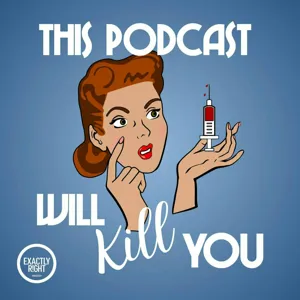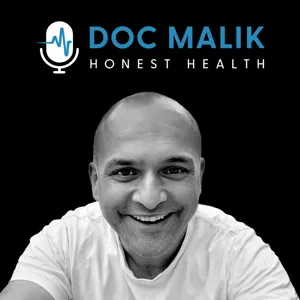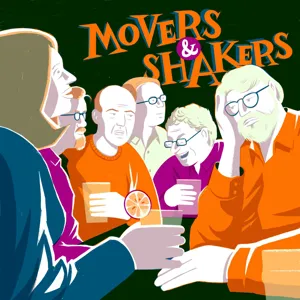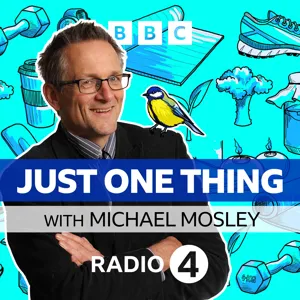Recovering from a tonsillectomy: More challenging than expected: Though tonsillectomy resolves recurring tonsil infections, the recovery process can involve severe pain, difficulty swallowing, dehydration, and unexpected side effects like post-surgery gunk and medication challenges.
While a tonsillectomy can be an effective solution for recurring tonsil infections, the recovery process can be more challenging than anticipated. Erin's experience involved multiple weeks of severe pain and difficulty swallowing, leading to dehydration and the need for hospitalization. She also wasn't warned about the post-surgery gunk or the difficulty in taking pain medication due to swallowing issues. Despite these challenges, Erin is grateful for the procedure as she no longer experiences tonsil infections and is off antibiotics. However, she wishes her doctor had been more transparent about the recovery process.
Underestimating the severity of an adult tonsillectomy: Be prepared for the challenges of an adult tonsillectomy and appreciate its historical significance.
People underestimate the pain and recovery process of an adult tonsillectomy. The speaker shared her personal experience of being unprepared for the severity of the procedure and wished she had been warned beforehand. This is a common theme among people who have had the surgery later in life. The topic of tonsillectomies is an intriguing one, with a history deeply rooted in cultural history. Many people believe that having their tonsils removed was a rite of passage, especially in the 20th century. Tonsillectomies were a common procedure, and ice cream was often used as a reward for recovering patients. In the spirit of this discussion, the hosts served a "cutthroat" cocktail, a malted chocolate milk beverage with whiskey, ice cream, and chocolate sauce. The episode also explored the history and reasons behind tonsillectomies, answering many personal questions the hosts had about the procedure. Overall, the takeaway is to be aware of the potential challenges of an adult tonsillectomy and appreciate the historical significance of this common medical procedure.
Tonsils: Protective Mucosal Tissue in Our Throat: Tonsils, a type of mucosal associated lymphoid tissue, protect us from infection in our throat, while other parts of our body have similar immune-related tissue like Peyer's patches, isolated lymphoid follicles, and appendix.
Tonsils are a type of mucosal associated lymphoid tissue (MALT) that form a ring at the back of our throat, protecting us against infection. While all tonsils are MALT, not all MALT is tonsils. Mucosal surfaces throughout our bodies, including our guts, are covered in this immune-related tissue. For example, our guts have Peyer's patches and isolated lymphoid follicles. Our appendix is also lymphoid tissue. Tonsils, specifically our palatine and pharyngeal tonsils, are the ones most people think of when they hear the term. They are the ones that get swollen and painful when infected. But all tonsils, regardless of their location, serve the same purpose: to protect us from infection.
Mucosa-Associated Lymphoid Tissue (MALT) as the First Line of Defense: MALT, including structures like tonsils, acts as a first line of defense against infections on mucosal surfaces by directly sampling antigens and producing IgA antibodies. B and T cells reside in the inner parts of MALT structures, and m cells on the epithelial tissue transport antigens for immune response.
Our immune system is a complex network of organs and cells working together to identify and eliminate foreign substances, or antigens, from our bodies. One important aspect of this system is the mucosa-associated lymphoid tissue (MALT), which acts as a first line of defense. MALT, including structures like tonsils, has cells called m cells that directly sample antigens from the mucosa and transport them to the inner parts of the tissue where B and T cells reside. These cells produce IgA antibodies, which are important for defending against infections on mucosal surfaces. MALT is histologically similar to lymph nodes but is not connected to the lymphatic system. The crypts in tonsils and other MALT structures provide housing for B and T cells, and the epithelial tissue covering these structures is home to m cells. Overall, MALT plays a crucial role in the immune response by identifying and neutralizing antigens at the site of entry into the body.
Tonsils: Gatekeepers and Potential Causes of Sore Throats: Tonsils are essential parts of our immune system, filtering out viruses and bacteria, but can become inflamed or infected, leading to painful conditions like tonsillitis. Not all sore throats lead to tonsillitis, but respiratory pathogens often target tonsil cells.
Tonsils are crucial components of our immune system, acting as gatekeepers to our digestive and respiratory systems by constantly sampling and filtering out viruses and bacteria. However, their constant exposure makes them susceptible to inflammation and infection, leading to conditions like tonsillitis. Despite their importance, tonsils can sometimes need to be removed due to severe or recurring infections. It's important to note that not all sore throats result in tonsillitis, but when it occurs, it can be painful due to inflammation and the presence of open nerve endings in the affected area. Additionally, many respiratory pathogens are well-adapted to the cells of our tonsils, making them particularly susceptible to infection.
Tonsil Infections in Children: Causes and Consequences: Children's tonsils are susceptible to infections, leading to missed school, pain, and antibiotic exposure. Enlarged tonsils can cause ear infections, breathing problems, and even airway compromise. Seek medical attention for severe infections and bacterial causes.
Tonsils, especially in young children, are prone to infections due to their size and location in the upper airways. These infections can lead to recurrent issues such as missed school, pain, and exposure to antibiotics. Enlarged tonsils can also increase the risk of ear infections and breathing problems, including obstructive sleep apnea. Severe infections can even cause airway compromise and require medical attention. Tonsil stones, which are collections of debris in the tonsils, can also cause problems. Bacterial infections, such as strep throat, are more likely to cause complications than viral infections. It's important for parents and caregivers to be aware of the signs and symptoms of tonsil infections and seek medical attention when necessary.
Understanding Tonsils and Their Potential Issues: Tonsils play crucial roles but can cause recurrent infections and sleep issues, leading to surgical removal. Risks include bleeding and infection, but long-term effects are not well-known.
Tonsils, while serving important functions such as protecting against infections and producing antibodies, can become problematic and require removal through tonsillectomy and adenoidectomy. Complications from surgery include bleeding and infection, but long-term negative effects are not well-documented. The removal of tonsils shows the body's built-in redundancies, as we still have other mucosal lymphoid tissue and our entire immune system. Tonsillectomies have been performed for thousands of years, even before anesthesia and antibiotics, and references to them can be found in ancient texts. Despite the risks, the benefits of tonsillectomy include reducing recurrent infections and improving sleep in certain cases. Overall, tonsils are fascinating structures with essential roles but also the potential for issues that may necessitate surgical intervention.
A long and painful history of tonsillectomies: From ancient times to the Middle Ages and back, tonsillectomies underwent significant changes, with debates over their necessity and methods, but medical professionals persisted in refining the procedure to alleviate suffering.
Tonsillectomies, a common surgical procedure today, have a long and painful history. Roman aristocrat Celsus described the process as painful and required the use of hooks, scalpels, and even sunlight to perform. Galen, a 2nd century CE physician, suggested using a snare to amputate the tonsil, while Paul of Agena advocated for waiting until the inflammation subsided before performing the surgery. During the Middle Ages, tonsillectomies declined in popularity, but by the 16th century, they became fashionable again, despite the discomfort and controversy surrounding their removal. Some believed that the tonsils absorbed secretions from the brain and filtered them before sending them back, and without them, these secretions would linger and cause hoarseness. One surgeon even warned that the procedure could turn into a physical fight between the surgeon and the patient. The history of tonsillectomies is a testament to the resilience and determination of medical professionals to improve surgical techniques and alleviate suffering, despite the challenges and controversies.
A brief history of tonsillectomy: From ancient methods to modern techniques, tonsillectomy's history reflects advancements in medical knowledge and practices, with a focus on improving patient outcomes and reducing complications.
The history of tonsillectomy, or the removal of tonsils, is marked by controversy, ordeal, and debate. This medical procedure, which involves removing the tonsils to alleviate various health issues, has been practiced for over two millennia. Early methods, such as using a tonsil guillotine or even a simple fingernail, were crude and often resulted in complications. However, as medical knowledge advanced, surgeons began to realize that partial removal was not always effective, leading to the development of more sophisticated tools and techniques for complete removal. The popularity of tonsillectomy reached its peak in the first half of the 20th century, but its use declined in the mid-20th century due to advancements in germ theory, hospital practices, and the shifting perspective of evolution. In essence, the history of tonsillectomy is a reflection of the evolving understanding of human health and the medical practices that emerged from it.
Belief in tonsillectomy based on anecdotal evidence and personal experience: Early 20th century surgeons believed tonsils were a major source of systemic infections due to anecdotal evidence and personal experience, not based on solid evidence or extensive investigation
The belief among surgeons in the early 20th century that tonsils were a major source of systemic infections and should be removed was driven by the common experience of seeing the positive effects of tonsillectomy in patients with recurring throat infections. This belief was fueled by the assumption that tonsils were an incubator of infection, harboring bacteria that could enter the bloodstream and cause widespread illness. This belief was not based on solid evidence or extensive investigation, but rather on anecdotal evidence and personal experience. The idea that tonsils were vestigial structures, remnants of evolution that no longer served a purpose, may have also contributed to this belief. However, it's important to note that not all surgeons shared this view, and the decision to remove tonsils was not a universal practice. The belief that tonsils were not necessary gained traction during the mid-19th century with the introduction of the theory of evolution and the concept of vestigial structures. Despite this, tonsils were not listed as a vestigial structure by Robert Wiedersheim in his influential work "The Structure of Man."
The rise and controversy of tonsillectomies in the 20th century: The popularity of tonsillectomies in the early 20th century was influenced by evolutionary theories, advancements in surgery, and beliefs in vestigial organs. However, doubts arose due to incomplete procedures and lack of evidence for their effectiveness.
The popularity of tonsillectomies during the first half of the 20th century was driven by a combination of factors, including the theory of evolution by natural selection and the belief in vestigial organs, as well as advancements in surgery and anesthesia that made the procedure more common and profitable. However, as statistical and controlled clinical studies emerged, doubts about the necessity and effectiveness of tonsillectomies grew, and it was found that many of the procedures had been incomplete, leaving residual tonsil tissue in many patients. Despite this, tonsillectomies continued to be hailed as essential for child health by some, while others questioned their value. This history serves as a reminder of the importance of rigorous scientific inquiry and the potential consequences of accepting medical practices without sufficient evidence.
Decades long gap between new research and public acceptance: It takes decades for new scientific findings to be accepted and applied in the medical field and public practice
The acceptance and application of new scientific research in the medical field, and ultimately in the general public, can take decades. The example of tonsillectomy illustrates this well. Despite evidence emerging in the 1920s that the procedure may not be necessary in all cases, it continued to be widely recommended and performed for several decades. The shift in attitude and decline in tonsillectomies did not begin until the 1960s and 1970s, and even then, it was a gradual process. The gap between primary research and its dissemination to the medical community and beyond is significant, and it can take a long time for new knowledge to reach and influence practice. This is due in part to the time it takes for researchers to test and confirm new findings, as well as the challenge of unlearning previously accepted knowledge. Additionally, factors such as the availability of alternative treatments and changes in medical training and practice can contribute to the decline of a procedure like tonsillectomy.
Discrepancy between tonsillectomies and evidence-based criteria: Only 4% of children met criteria for tonsillectomy, yet over 32,000 were performed annually, emphasizing the need for evidence-based decision making in medical procedures.
Despite the historical significance of tonsillectomies, there is a significant discrepancy between the number of tonsillectomies performed and those that meet evidence-based criteria. A study from the UK found that only 4 in 1,000 children met the paradise criteria for tonsillectomy, yet over 32,000 tonsillectomies were performed each year, with less than 1 in 8 of those having an evidence-based indication. This highlights the persistence of outdated practices and the importance of reevaluating the necessity of tonsillectomies. The study also emphasizes the need for more careful consideration and adherence to evidence-based guidelines in medical procedures.
Tonsillectomy Guidelines Vary Widely: Study reveals significant disparities in tonsillectomy rates for recurrent tonsillitis and obstructive sleep disordered breathing across the globe, with the US having one of the highest rates.
The guidelines for tonsillectomy, a common surgical procedure for children, can vary greatly depending on the location and the specific indication. A study from the UK found that a significant number of children underwent tonsillectomy for recurrent tonsillitis that did not meet the evidence-based criteria. However, the number of children recommended for tonsillectomy due to obstructive sleep disordered breathing or obstructive sleep apnea increased over time, even though it was not considered an evidence-based indication in the UK. The study also noted that the rates of tonsillectomy vary widely across the globe, with rates in some countries being twice as high as in the UK, and in others being significantly lower. In the US, about 289,000 tonsillectomies are performed each year on children under age 15. The most recent guidelines from the American Academy of Otolaryngology and Head and Neck Surgery Foundation recommend watchful waiting for recurrent infections, but strongly recommend tonsillectomy for obstructive sleep disordered breathing. The evidence for this indication is not as strong as for other indications, but the numbers may be increasing as more evidence becomes available.
Studying the human immune response using tonsil organoids: New method allows observation of immune response to vaccines and infections in a more realistic human model, potentially leading to advancements in vaccine development and a better understanding of the immune system. Tonsils, long controversial, play an important role in our immune system.
Researchers have discovered a new way to study the human immune response using organoids grown from tonsil tissue. This method, which was first demonstrated in a 2021 study published in Nature Medicine, allows scientists to observe the immune response to vaccines and infections in a more realistic human model than animal models. This could lead to advancements in vaccine development and a better understanding of the immune system. Additionally, there is evidence suggesting short-term improvements in sleep outcomes and behavioral parameters for those who undergo tonsillectomies. Despite the controversy surrounding tonsillectomies throughout history, it's clear that tonsils play an important role in our immune system, particularly in responding to respiratory infections. For more information on the history and significance of tonsils, check out the recommended sources.
The importance of hand washing: Hand washing is a simple yet effective habit that prevents the spread of diseases and viruses, protecting individuals and those around them.
Proper hygiene, specifically hand washing, is essential to maintain good health. The discussion emphasized the importance of hand washing in preventing the spread of diseases and viruses. It's a simple yet effective measure that can help protect individuals and those around them. The reminder to wash hands was delivered with a lighthearted tone, but the message remains serious. Staying clean is a crucial habit that can make a significant impact on overall health and wellbeing. So, remember to wash your hands regularly, especially during times when the risk of infection is higher. It's a small action that can lead to big benefits.
Ep 134 Tonsils: Underestimated and underappreciated
Recent Episodes from This Podcast Will Kill You
Special Episode: Dan Egan & The Devil’s Element

Ep 151 Stethoscope: Lub dub

Ep 150 Norovirus: Tip of the poop iceberg

Special Episode: Maria Smilios & The Black Angels

Ep 149 Poison Control Part 2: Call me maybe

Ep 148 Poison Control Part 1: Who you gonna call?

Special Episode: Ben Goldfarb & Crossings

Ep 147 Tasmanian Devil Facial Tumor Disease: Sympathy for the Devil

Ep 146 Celiac Disease: Rootin tootin gluten

Special Episode: Dr. Rageshri Dhairyawan & Unheard

Related Episodes
Born in the Eighties 293: Study Your Sleep Jon

Jon participates in a sleep study, Matt watches Ladybird, TJ dishes on Patreon's update, and we all attempt to pronounce Saoirse correctly.
Brian Hooker On His Book Vax-Unvax: Let The Science Speak

If you value my podcasts, please support the show so that I can continue to speak up by choosing one or both of the following options -
Buy me a coffee If you want to make a one off donation.
Join my Substack To access additional content, you can upgrade to paid, from just £3.50 a month.
To sponsor the Doc Malik Podcast contact us at hello@docmalik.com
About this interview:
Brian S. Hooker, PhD, is the Chief Scientific Officer at Children’s Health Defense, an organization committed to the best health for children in the U.S. and worldwide. He is also former Professor of Biology at Simpson University in Redding California where he specialized in microbiology and biotechnology. Brian co-authored the book Vax-Unvax: Let the Science Speak with Robert F. Kennedy, Jr. The book was released August 29, 2023.
Dr. Hooker has been active in vaccine safety since 2001 and has a 25-year-old son with autism. In 2013 and 2014, Dr. Hooker worked with the CDC Whistleblower, Dr. William Thompson, to expose fraud and corruption within vaccine safety research in the CDC which led to the release of over 10,000 pages of documents.
In this podcast we talk about the difference in health between vaccinated and unvaccinated children. What Brian has to tell me is shocking.
I hope you enjoy this conversation.
Links -
Instagram
Brian Hooker IG
Twitter
Brian Hooker Twitter
About Doc Malik: Orthopaedic surgeon Ahmad Malik is on a journey of discovery when it comes to health and wellness. Through honest conversations with captivating individuals, Ahmad explores an array of topics that profoundly impact our well-being and health.
You can follow us on social media, we are on the following platforms:
Twitter Ahmad | Twitter Podcast | Instagram Ahmad | Instagram Podcast
Chiropractor Jobstown NJ – Lifestyle Factors Can Delay Memory Loss

Watch this video now and find out why Super-agers at 74 years of age have the memory scores of people 30 years younger. Just click on the Red More Button in your email or the image below if you are on our website. This information is provided for educational and entertainment purposes only and does […]
The post Chiropractor Jobstown NJ – Lifestyle Factors Can Delay Memory Loss appeared first on Drs. Dawn and Ryan Wille HealthNews.
What Causes Parkinson's?

What causes Parkinson's? This is one of the trickiest questions facing researchers and doctors – not to mention patients – and it's the topic being tackled by the Movers and Shakers as they take to the Notting Hill pub today. Is there something atmospheric? Or does the club lie in our DNA? Our guide through this topic is Professor Matt Farrer, one of the leading lights of this research area.
Presented by Rory Cellan-Jones, Gillian Lacey-Solymar, Mark Mardell, Paul Mayhew-Archer, Sir Nicholas Mostyn and Jeremy Paxman.
Produced and edited by Nick Hilton for Podot.
Additional production by Ewan Cameron.
Music by Alex Stobbs.
Artwork by Till Lukat.
PR by Sally Jones.
For more additional information about the show, as well as extra resources and exclusive content, please visit MOVERSANDSHAKERSPODCAST.COM
Hosted on Acast. See acast.com/privacy for more information.
Breathe Through Your Nose

Take a nice deep breath in… through your nose. It’s a simple way to get healthier gums, a better memory, and improved lung function. How? Well, it may partly be due to a special molecule called nitric oxide. Michael Mosley speaks to Professor Jon Lundberg from the Karolinska Institute in Sweden who made the fascinating discovery that nitric oxide is produced in your nose and travels to your lungs where it has some surprising benefits, including boosting oxygen uptake and possibly helping you fight off infections. Our volunteer Joe tries out a few tips to make nasal breathing a habit.
New episodes will be released on Wednesdays, but if you’re in the UK, listen to new episodes, a week early, first on BBC Sounds: bbc.in/3zqa6BB
Producer: Nija Dalal-Small Science Producer: Catherine Wyler Assistant Producer: Gulnar Mimaroglu Trainee Assistant Producer: Toni Arenyeka Executive Producer: Zoe Heron A BBC Studios production for BBC Sounds / BBC Radio 4.